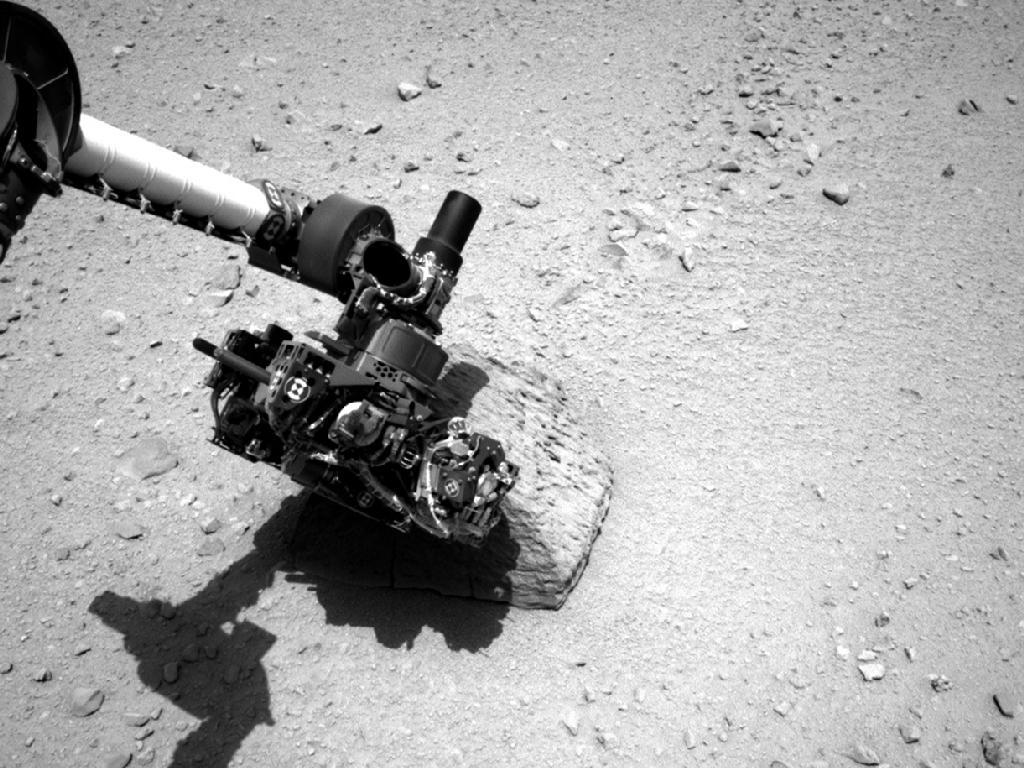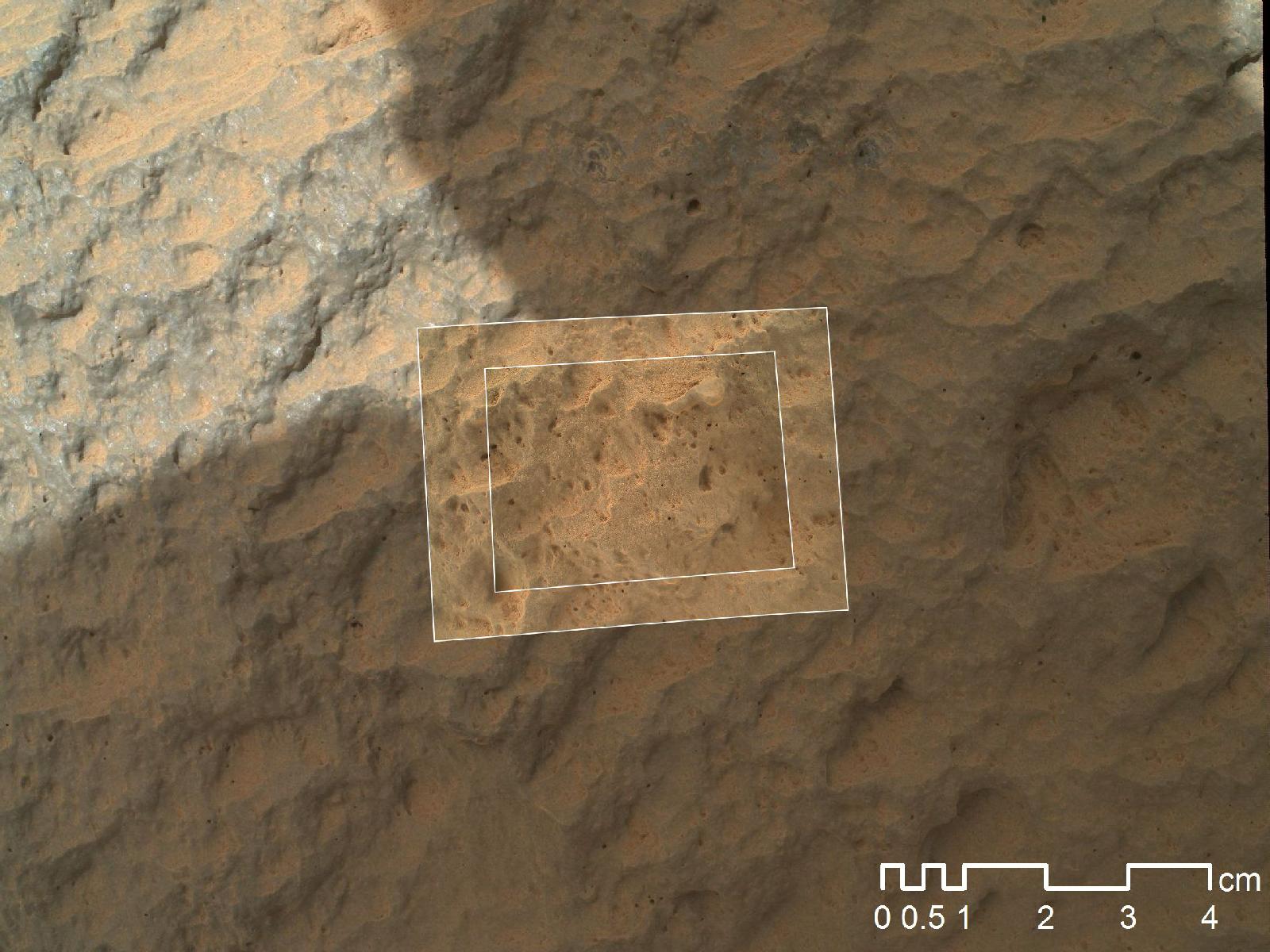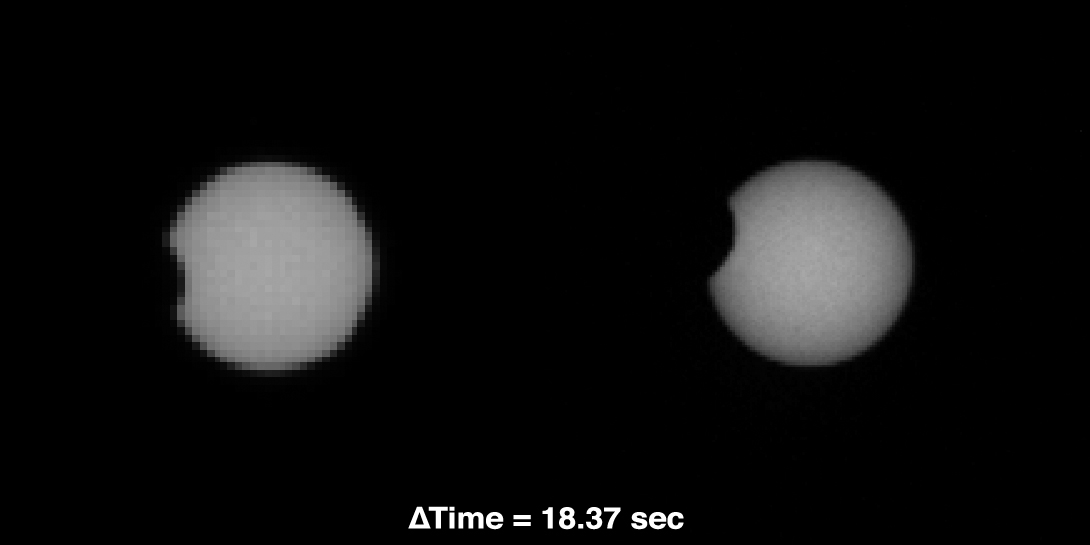Mars Rover Curiosity Photos: Aug.-Sept. 2012

Best View of Goulburn Scour
This image from NASA's Curiosity Rover shows a high-resolution view of an area that is known as Goulburn Scour, a set of rocks blasted by the engines of Curiosity's descent stage on Mars. Curosity's Mastcam obtained these images on Aug. 19, 2012, or the 13th sol, or Martian day, of Curiosity's surface operations. [Full Story]
Link to a Watery Past
In this image from NASA's Curiosity rover, a rock outcrop called Link pops out from a Martian surface that is elsewhere blanketed by reddish-brown dust. The Link outcrop was imaged with the 100-millimeter Mast Camera on Sept. 2, 2012, which was the 27th sol, or Martian day of operations. [Full Story]
Rock Outcrops on Mars and Earth
This set of images compares the Link outcrop of rocks on Mars (left) with similar rocks seen on Earth (right). The image of Link, obtained by NASA's Curiosity rover, shows rounded gravel fragments, or clasts, up to a couple inches (few centimeters), within the rock outcrop. The Link outcrop was imaged with the 100-millimeter Mast Camera on Sept. 2, 2012, which was the 27th sol, or Martian day of operations. [Full Story]
Dry Streambed on Alluvial Fan in Northern Chile
This image shows a dry streambed on an alluvial fan in the Atacama Desert, Chile, revealing the typical patchy, heterogeneous mixture of grain sizes deposited together. On Mars, Curiosity has seen two rock outcrops close to its Bradbury Landing site that also record a mixture of sand and pebbles transported by water that were most likely deposited along an ancient streambed. Image released September 27, 2012.
Martian Moon Phobos Seen by Curiosity Rover, Closeup
This close up from a photo by NASA's Mars rover Curiosity shows the Martian moon Phobos as a faint crescent in the Martian evening sky. The black blemish is the result of a bad pixel in the image data. Image released Sept. 26, 2012. [Full Story]
Martian Moon Phobos Seen by Curiosity Rover
NASA's Mars rover Curiosity snapped this photo of the largest Martian moon Phobos during a Mars sky observing session. Phobos is Mars' largest moon, but only 14 miles across. Image released Sept. 26, 2012. [Full Story]
Curiosity's Robotic Arm Touching Rock 'Jake Matijevic'
NASA's Curiosity rover performs "contact science" operations on a rock called "Jake Matijevic" in this photo, which was snapped Sept. 22, 2012. [Full Story]
Breaking space news, the latest updates on rocket launches, skywatching events and more!
Mars Rover Touches 1st Rock (Closeup)
This image combines photographs taken by the Mars Hand Lens Imager (MAHLI) at three different distances from the first Martian rock that NASA's Curiosity rover touched with its arm. The three exposures were taken during the 47th Martian day, or sol, of Curiosity's work on Mars (Sept. 23, 2012). The team has named the target rock "Jake Matijevic." The scale bar is 4 centimeters (1.6 inches). [Full Story]
Curiosity Rover's Rock Named Jake Matijevic
The drive by NASA's Mars rover Curiosity during the mission's 43rd Martian day, or sol, (Sept. 19, 2012) ended with this rock about 8 feet (2.5 meters) in front of the rover. The rock is about 10 inches (25 centimeters) tall and 16 inches (40 centimeters) wide.The rock has been named "Jake Matijevic" after Jacob Matijevic (1947-2012), who was the surface operations systems chief engineer for Curiosity's mission.
Mars Rover Curiosity Sees Phobos
As part of a multi-mission campaign, NASA's Curiosity rover is observing Martian moon transits, the first of which involved the moon Phobos grazing the sun's disk. The event was observed on Martian day, or sol, 37 (September 13, 2012) using Curiosity's Mast Camera, or Mastcam, equipped with special filters for directly observing the sun
Curiosity Rover's Mars Drive Map: 9/19/12
This map shows the route driven by NASA's Mars rover Curiosity through the 43rd Martian day, or sol, of the rover's mission on Mars (Sept. 19, 2012). By Sol 43, Curiosity had driven at total of about 950 feet (290 meters).

Space.com is the premier source of space exploration, innovation and astronomy news, chronicling (and celebrating) humanity's ongoing expansion across the final frontier. Originally founded in 1999, Space.com is, and always has been, the passion of writers and editors who are space fans and also trained journalists. Our current news team consists of Editor-in-Chief Tariq Malik; Editor Hanneke Weitering, Senior Space Writer Mike Wall; Senior Writer Meghan Bartels; Senior Writer Chelsea Gohd, Senior Writer Tereza Pultarova and Staff Writer Alexander Cox, focusing on e-commerce. Senior Producer Steve Spaleta oversees our space videos, with Diana Whitcroft as our Social Media Editor.











